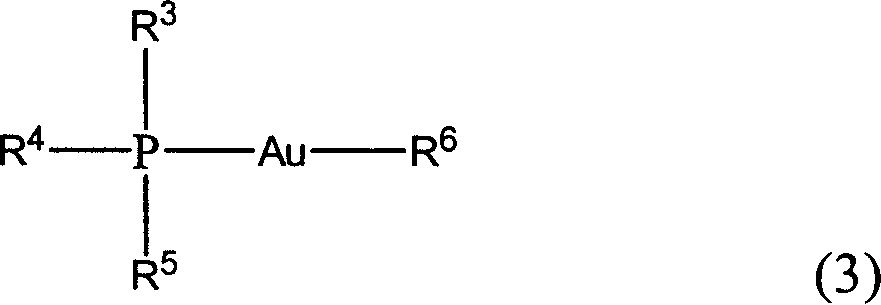Process for producing carbonyl compound
A technology of carbonyl compounds and compounds, applied in the field of production of carbonyl compounds, which can solve the problems of low reactivity and inability to obtain favorable effects
- Summary
- Abstract
- Description
- Claims
- Application Information
AI Technical Summary
Problems solved by technology
Method used
Image
Examples
Embodiment 1-4
[0088] 0.005g methyl (triphenylphosphine) gold (0.01mmol) is dissolved in 1ml and forms a solution in the solvent shown in table 1, adds the 1-octyne (1mmol) of 0.11g in this solution and by the concentrated sulfuric acid ( 0.5mmol) dissolved in 0.5ml of water to form an aqueous solution. Table 1 summarizes the yield of 2-octanone after stirring at 70 °C for 1 hour.
[0089] Table 1
[0090] Example
Embodiment 5
[0092] The reaction was performed in the same manner as in Example 1 except that 1-butyl-3-methylimidazolium hexafluorophosphate was used as a solvent. As a result, 2-octanone was obtained in a yield of 89%.
Embodiment 6
[0094] The reaction was performed in the same manner as in Example 5 except that 0.01 g of methyl(triphenylphosphine)gold (0.02 mmol) was used. As a result, 2-octanone was obtained in a yield of 96%.
PUM
 Login to View More
Login to View More Abstract
Description
Claims
Application Information
 Login to View More
Login to View More - R&D
- Intellectual Property
- Life Sciences
- Materials
- Tech Scout
- Unparalleled Data Quality
- Higher Quality Content
- 60% Fewer Hallucinations
Browse by: Latest US Patents, China's latest patents, Technical Efficacy Thesaurus, Application Domain, Technology Topic, Popular Technical Reports.
© 2025 PatSnap. All rights reserved.Legal|Privacy policy|Modern Slavery Act Transparency Statement|Sitemap|About US| Contact US: help@patsnap.com



